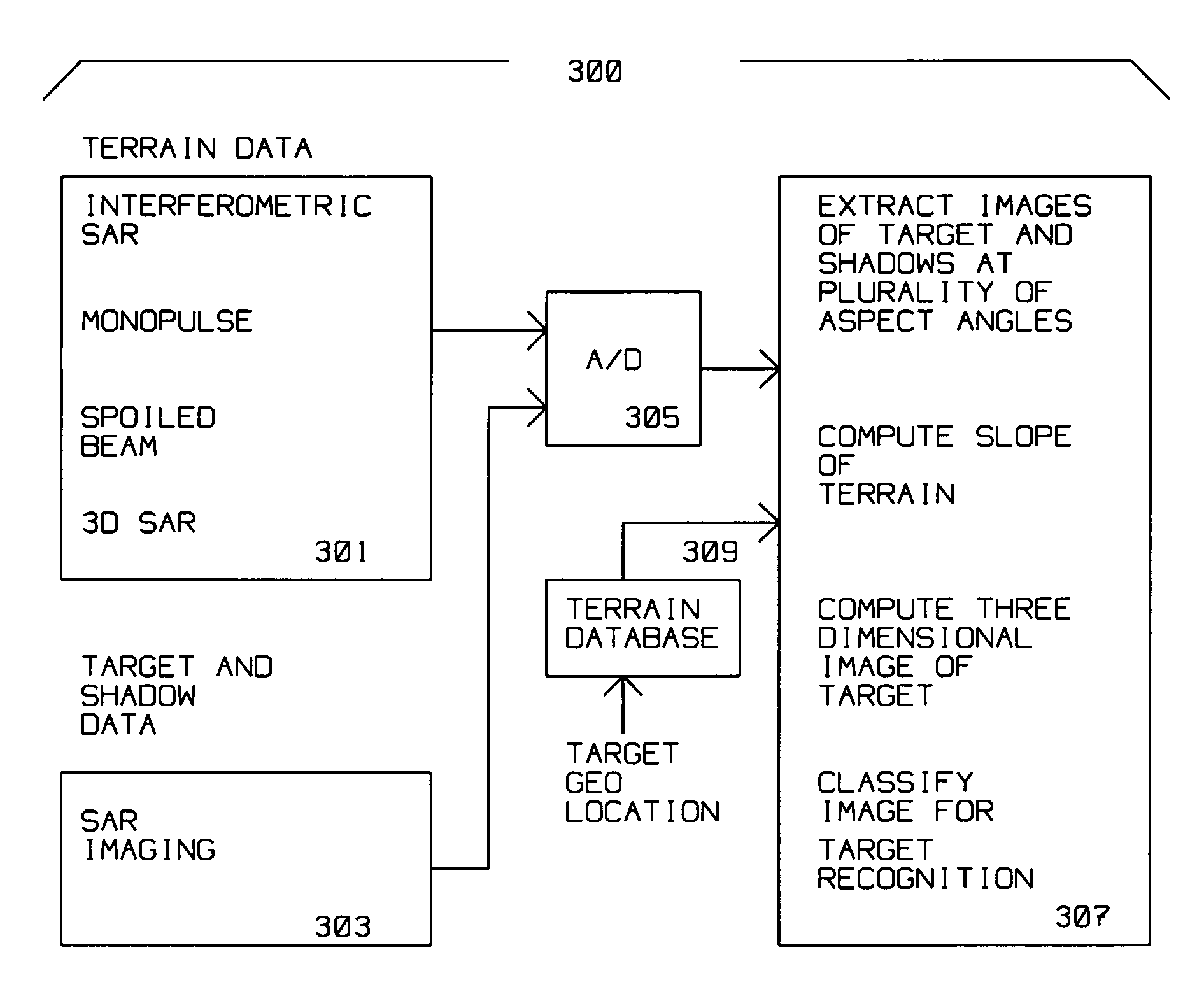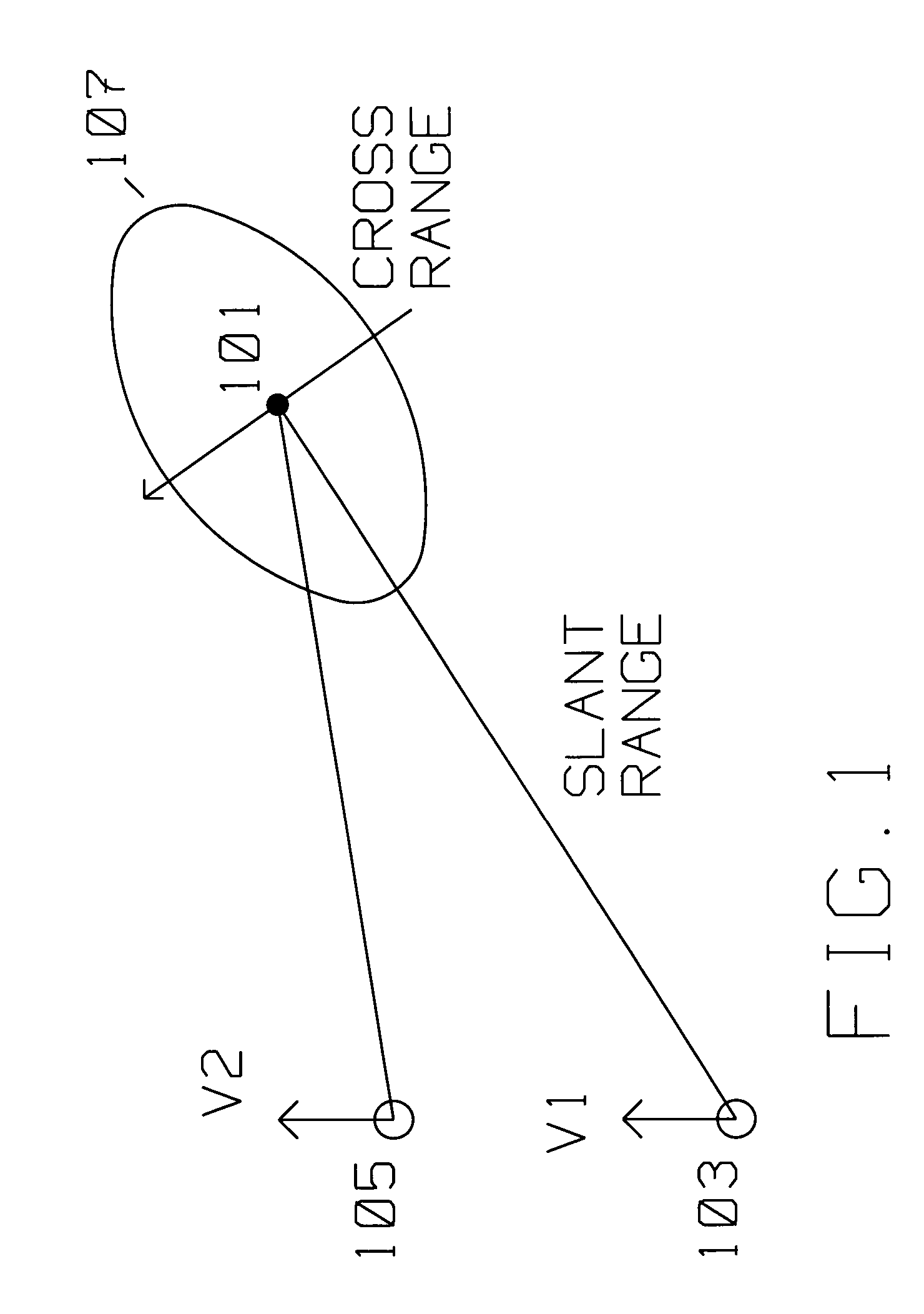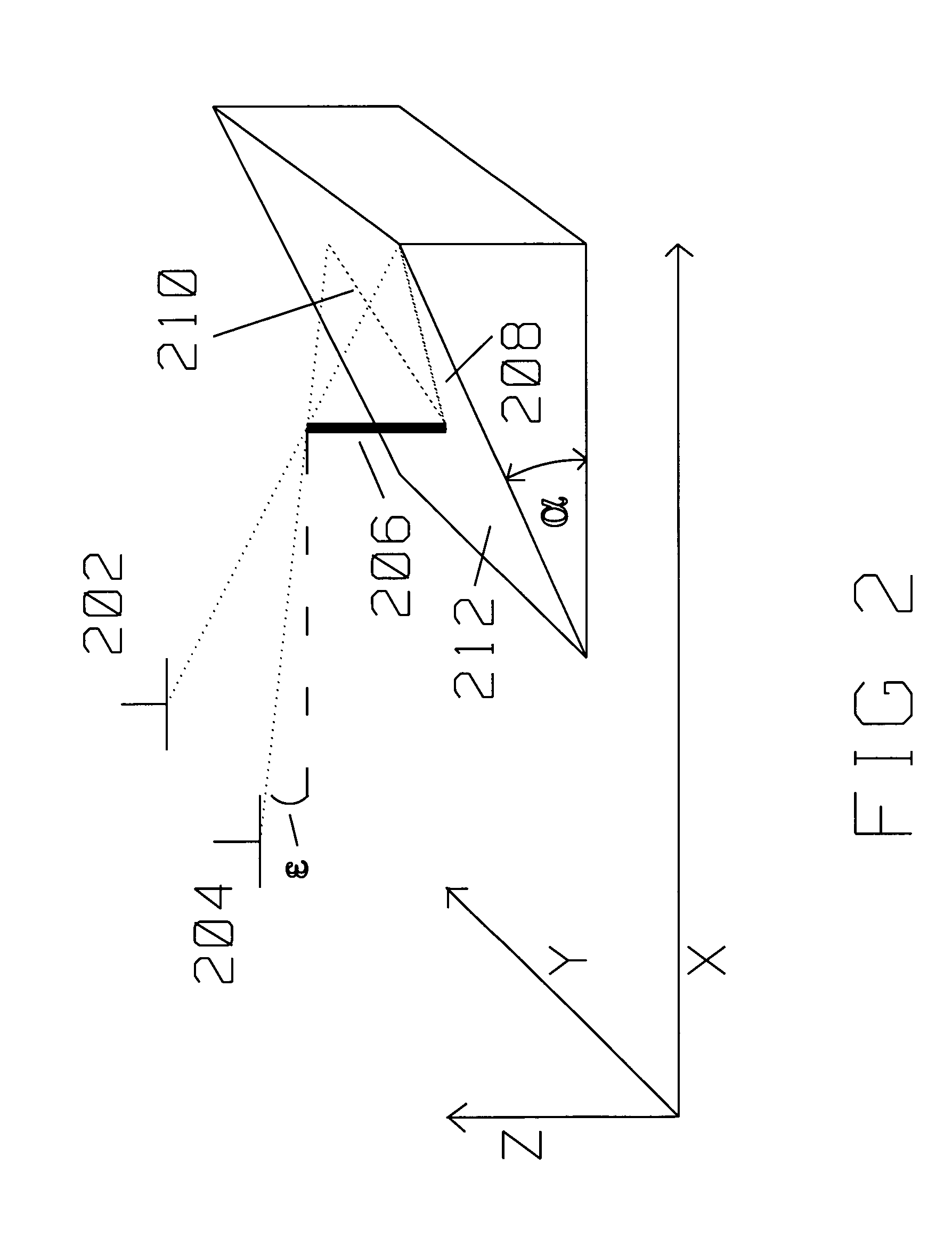Technique for low grazing angle 3D SAR target recognition
a low grazing angle and target technology, applied in the field of radar imaging, can solve the problems of affecting the imaging and target identification process, affecting the image acquisition and identification process, and the complexity of the imaging process may be compounded, so as to achieve the effect of reducing the timeline for acquiring a plurality of aspect angles of the target and high gain
- Summary
- Abstract
- Description
- Claims
- Application Information
AI Technical Summary
Benefits of technology
Problems solved by technology
Method used
Image
Examples
Embodiment Construction
[0020]The present invention avoids above limitations of the prior art by using a radar and method of radar operation for 3 dimensional target recognition from a plurality of SAR images acquired at different aspect angles of the target. The different aspect angles viewed from the radar illuminate the target at low grazing angles for lengthy shadows. The target is identified from the lengthy shadows cast upon uneven terrain, such as a sloping surface. The plurality of images generated while different aspect angles of target are being acquired are combined and processed using Automatic Target Recognition (ATR) methods for target recognition.
[0021]FIG. 1 shows the typical top view of the geometric relationship between a moving platform carrying a radar transmitter / receiver using Synthetic Aperture (SAR) spotlight methods and target 101 to be imaged by said radar transmitter / receiver. Target 101 is a radar scatterer having an elevation above a ground surface, where the surface may be slo...
PUM
 Login to View More
Login to View More Abstract
Description
Claims
Application Information
 Login to View More
Login to View More - R&D
- Intellectual Property
- Life Sciences
- Materials
- Tech Scout
- Unparalleled Data Quality
- Higher Quality Content
- 60% Fewer Hallucinations
Browse by: Latest US Patents, China's latest patents, Technical Efficacy Thesaurus, Application Domain, Technology Topic, Popular Technical Reports.
© 2025 PatSnap. All rights reserved.Legal|Privacy policy|Modern Slavery Act Transparency Statement|Sitemap|About US| Contact US: help@patsnap.com



